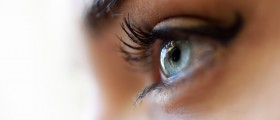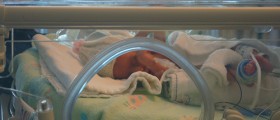
Overview of Diabetic Retinopathy
Diabetic retinopathy is a disorder of the retina caused directly by diabetes. Retinopathy is primarily characterized by the destruction of the blood vessels at the back of the eye due to high levels of sugar in the blood. The damaged blood vessels often leak blood and disrupt normal vision. If the blood gets onto the retina it will lead to enlargement and further obstruction in functioning. The disorder is also characterized by production of new malfunctioning blood vessels in the eye. In addition, diabetic retinopathy is divided into several stages, which differ based on the severity of the problem. At first, retinopathy generates little to no symptoms. Consequently, it is very important that individuals who are diabetic be aware of the consequences of their underlying disease in order to get regular checkups and diagnose problems in the early stages. As the disease progresses, diabetic retinopathy usually leads to gradual vision loss and can result in blindness. Persons suffering from both Type 1 and Type 2 diabetes are equally susceptible to retinopathy. Experts agree that the best way to prevent vision loss is to keep the blood sugar levels in check. Anyone who has had diabetes for more than a few years should have annual eye exams.Types of Diabetic Retinopathy
Experts agree that there are three distinct types of the disease, including non-proliferative, maculopathy, and proliferative retinopathy. The types of retinopathy are not mutually exclusive so it is not uncommon for one patient to have the symptoms of more than one stage. The non-proliferative retinopathy is relatively mild and is characterized by the enlargement of blood vessels. During an eye exam, the swollen blood vessels look like red dots on the surface of the retina. Also, this stage is manifested by the presence of yellow deposits of fat from the blood. The non-proliferative stage does not lead to blindness. The features of the first stage are present in maculopathy as well but occur on the macula. Macula is the central and most important part of the retina and once it is damaged the consequences include vision problems, especially during reading or trying to detect details. Finally, the proliferative retinopathy is distinguished by blocked blood vessels. Once there are insufficient amounts of blood in the retina new malfunctioning vessels start to develop. Such blood vessels may leak blood directly into the retina or lead to its detachment from the back of the eye, which results in blindness. Also, the abnormal blood vessels may cause the development of a special type of glaucoma that is difficult to medicate. It should be noted that not even the proliferative retinopathy would generate any symptoms until the disorder progresses further. It is therefore crucial that diabetic individuals visit eye doctors on a regular basis.Symptoms
Many patients start to develop retinopathy without being aware of it. As time goes on various symptoms will appear and alert the person. For instance, dark spots in vision become noticeable, and so do empty areas. The vision is likely to be blurred and start to fluctuate. The ability to see in the dark or distinguish between colors becomes reduced. It is not uncommon for the disorder to affect both eyes.How is Diabetic Retinopathy Diagnosed?
The only way to prevent vision loss is by carefully dealing with diabetes. Also, individuals who are at more risk for vision problems, such as pregnant women, are advised to see eye doctors regularly throughout the pregnancy. The eyes exams for diagnosing retinopathy consist of dilating the pupils in order to be able to take a good look at the retina. The drops which are used during the test will probably cause blurry vision for a short period of time. Other changes in the eye that the doctor will be searching for include new blood vessels, enlargement of the retina, deposits of blood or scar tissue, bleeding, cataract, as well as whether the retina is still attached to the eye. The medical care professional will also check the vision and eye pressure. Damaged or broken blood vessels are one of the main signs of retinopathy so the diagnostic process includes searching for such vessels. The doctor will dilate the pupils and insert a dye into the arm of the patient. As the dye makes its way through the eyes, the doctor will take pictures to exactly locate the malfunctioning blood vessels. There are also imaging tests that are frequently employed to show the condition of the retina.Treatment
The non-proliferative retinopathy does not require medical treatment. Patients who are diagnosed with this stage of the disorder are just advised to have regular eye exams and closely follow the development of retinopathy. There are instances in which maculopathy does not need to be treated either. Doctors usually recommend laser treatment once the blood starts to leak and block vision. Laser eye surgery is the primary method of treatment for proliferative retinopathy and it results either in reducing the damage of blood vessels or eliminating them altogether.
















Your thoughts on this
Loading...